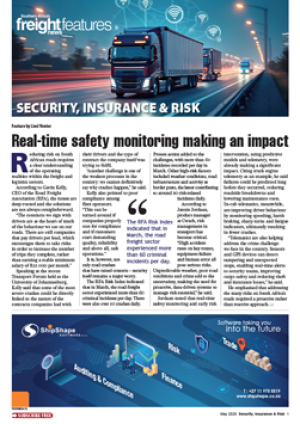The publication of three revised South African National Standards (SANS) for the transport of dangerous goods is imminent, and operators are advised to act with urgency.
Speaking at last week’s ‘Dangerous Goods Handling’ breakfast seminar hosted jointly by FTW and the Johannesburg Chamber of Commerce and Industry (JCCI), Eddie Crane, managing director of DGR Compliance Solutions, stressed that staff training was imperative.
The new standards include SANS 10231 which revises certain operational requirements; SANS 10232.1 which sees amended requirements for emergency information systems (part 1 – road transport); and SANS 10232.4 which also deals with emergency information systems, specifically information required on the transport emergency card.
He said the operational revisions required responsible parties – consignor, operator (transporter), driver, consignee – to be trained in dangerous goods handling.
“Furthermore, there needs to be a qualified person, who is specifically trained, on site at any incident involving dangerous goods.” He said that a qualified person could be a transporter, a manufacturer, a consignor or consignor agent, or even general staff.
“Regulations change all the time and it’s important that the designated ‘responsible person’ is 100% up to date on their training,” Crane said. He pointed out that drivers transporting dangerous goods now had to have a minimum national qualification (NQF) level three training certificate in English.
“Training providers need to be accredited and must provide the training in English,” he said, pointing out that the dangerous goods lingo was in English. “If the training is provided in another language, the drivers often don’t understand the en-route instructions and cannot read the accompanying documentation,” said Crane, adding that the Transport Education and Training Authority (Teta) was in the process of shutting down seven training providers who did not comply.
The revisions also include changes to dangerous goods declarations, insurance, equipment that must be carried on the vehicle, proper packaging, a safety dress code for drivers (safety boots and gloves) and en-route procedures that must be followed. This includes the fact that vehicles carrying dangerous goods should always be travelling on a national road.
“The only exceptions are when they are delivering goods in a particular town off a national road,” explained Crane, emphasising that noncompliance could result in an insurance claim not being paid out, or worse, the shipper being held liable for consequential losses in the case of a serious accident. Crane made the point that correct packaging of dangerous goods was of paramount importance to mitigate risks. He said that attention to packaging was usually most lax on the road.
INSERT
It’s important that the designated ‘responsible person’ is 100% up to date on their training. – Eddie Crane

